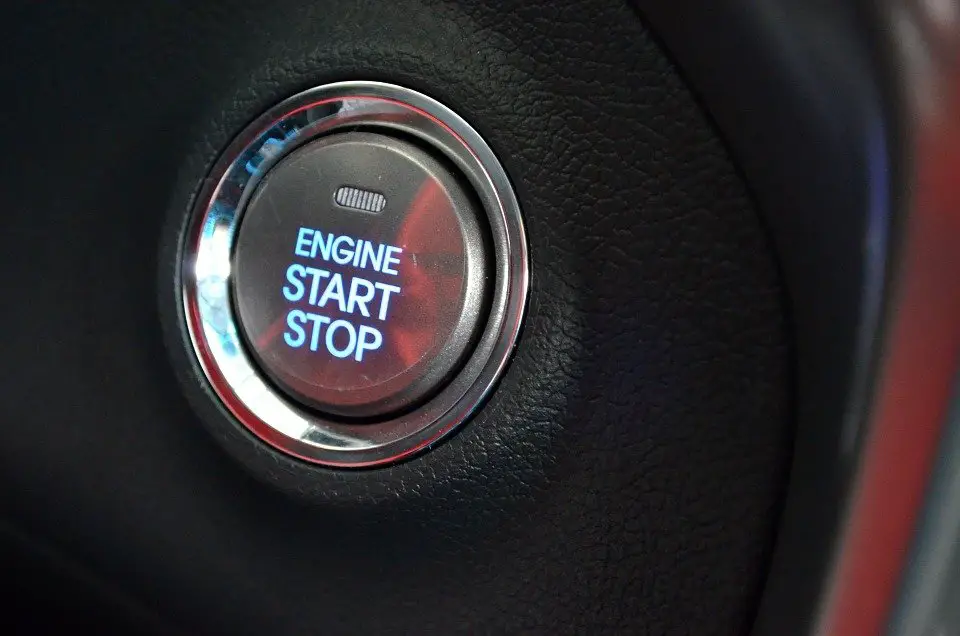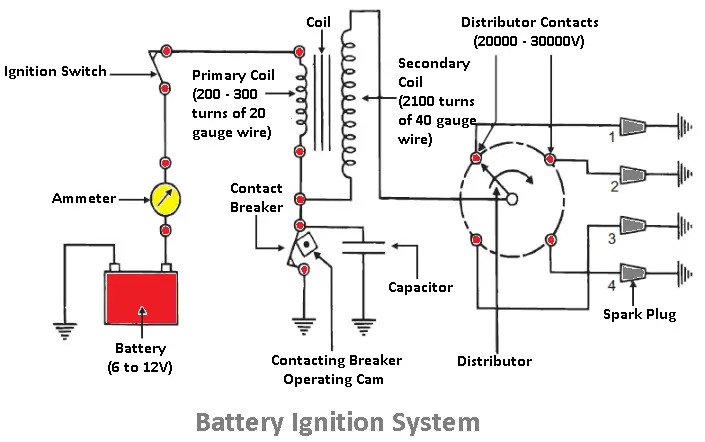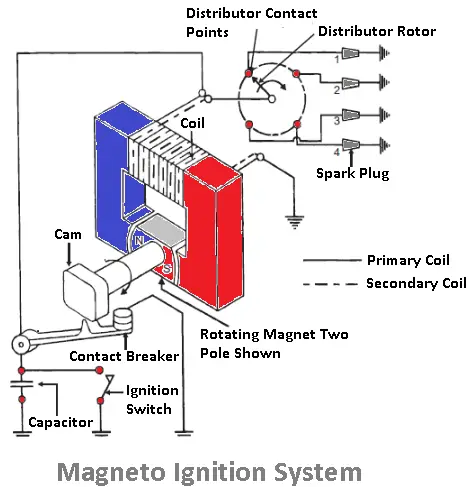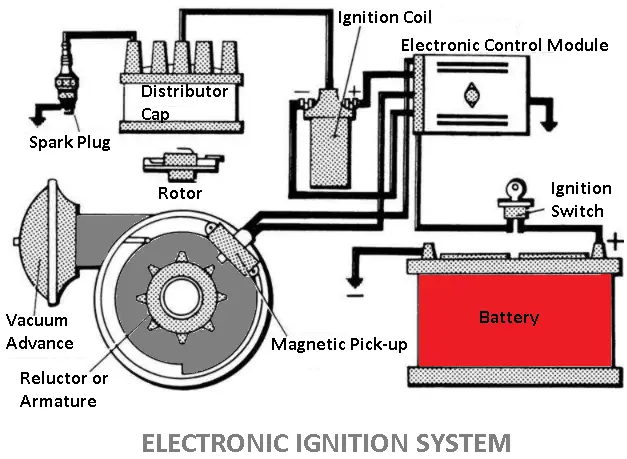In this article, you'll learn what is ignition system how it works? types of ignition system, working, diagram, and more. And also you can download the free PDF file of this article at the end.
Ignition System
The ignition system is one of the most important systems used in the I.C engines. The spark-ignition engine requires some device to ignite the compressed air-fuel mixture. The ignition takes place inside the cylinder at the end of the compression stroke, the ignition system serves this purpose.
It is a part of the electrical system which carries the electrical current to a current plug. It gives the spark to ignite the air-fuel mixture at the correct time.

Read our full article on I.C. engines it is one of our best articles. You'll get all the information about four-stroke and two-stroke engines.
Now back to the ignition system.
Types of Ignition System
Following are the types of ignition system:
- Battery ignition system or coil ignition system
- Magneto ignition system.
- Electronic Ignition System.
Both the ignition system is based on the principle of common electromagnetic induction. The battery ignition system is mostly used in passenger cars and light trucks.
In the battery ignition system, the current in the primary winding is supplied by the battery. In the magneto to the ignition system, the magneto produces and supplies the current in the primary winding.
Ignition System parts
- Battery,
- Switch ignition distributor
- Ignition coil
- Spark plugs and
- Necessary wiring.
Some system uses transistors to reduce the load on the distributor contact points. Other systems use a combination of transistors and magnetic pickup in the distributor.
Compression ignition engine does not have such an ignition system. In a compression ignition engine, only air is compressed in the cylinder. And at the end of the compression stroke, the fuel is injected which catch fire due to the high temperature and pressure of the compressed air.
An Ignition in The Vehicle
The ignition system supplied high voltage surges of current (as high as 30,000 to volts) the spark plug. These surges produce the electric sparks at the spark plug gap. Spark ignite to set fire to the compressed air-fuel mixture in the combustion chamber.
The sparking must take place at the correct time at the end of the compression stroke in every cycle of operation. At high speed or during part throttle operation, the spark is advanced. So that it occurs somewhat earlier in the cycle, the mixture thus has time to burn and deliver its power.
The ignition system should function efficiently at the high and low speeds of the engine. It should be simple to maintain, light, and compact. It should not cause any interference.
Battery Ignition System
The figure shows the battery ignition system for a 4 cylinder engine. A battery of 12 volts is generally employed. There are two basic circuits in the system primary and secondary circuits.
The first circuit has the battery, primary winding of the ignition coil, condenser, and the contact breaker from the primary circuit. Whereas the secondary winding of the ignition coil, distributor, and the spark plugs forms the secondary circuits.

The value of the voltage depends upon the number of turns in each coil. The high voltage 10,000 to 20,000 volts then passes to a distributor.
It consists of the spark plug of the cylinder in rotation depending upon the firing order of the engine. This causing a high-intensity spark jumps across the gap. Thereby ignition of the air-fuel mixture takes place in all the cylinders. The battery ignition system has massive use in cars, light trucks, buses, etc.
Magneto Ignition System
The magneto ignition system has the same principle of working like that of the battery ignition system. In this, no battery is required, as the magneto acts as its own generator.

It consists of either rotating magnets in fixed coils, or rotating coils in fixed magnets. The current produced by the magneto is made to flow to the induction coil which works in the same as that of the battery ignition system.
This high voltage current is then made to flow to the distributor which connects the sparking plugs in rotation depending upon the firing order of the engine. This type of ignition system is used small spark-ignition engines for example Scooters, Motorcycles and small motorboat engines.
Electronic Ignition System
The conventional electro-mechanical ignition system uses mechanical contact breakers. Though it is very simple, it suffers from certain limitations as follows.

-
The contact breaker points handle the heavy current. This resulting in burn out of contact points. Thus it requires periodical servicing and settings.
- The mechanically operated contact breaker has inertial effects. Hence at higher speeds, the make or break of contact may not be timed.
- At higher speeds, the dwell time for building up the current in the coil to its maximum value is low. Thus the spark strength may be reduced.
To overcome the above drawbacks, in the modern automobiles, electronic ignition systems are used. This electronic ignition system has its best performance at all varying conditions and speed, unlike electro-mechanical systems.
The electro ignition system consists of transistors, capacitors, diodes, and resistors. These acts as heavy-duty switches in controlling the primary current for the high voltage ignition coil.
Conclusion
So now, we hope that we have clear all your doubts about the Working of the Ignition System. If you have still any doubts about the "Types of Ignition System" you can contact us or ask in the comments.
We have also a Facebook community for you guys. If you want, you can join our community, here is the link to our Facebook group.
That's it thanks for reading. If you like our article then please share it with your friends. If you have any questions about any topic you can ask in the comment section.
Subscribe to our newsletter to get notified when we upload new posts.
Download the PDF file by clicking below:
Download PDF
You may be interested in reading this articles:
- Shaper machine.
- Reciprocating Pump and It's working principle.
- Micrometer Screw Gauge.
Source: https://www.theengineerspost.com/types-of-ignition-system/
Posted by: breesepearleoes.blogspot.com
Posting Komentar